Setagaya Plum Blossom Festival - Relish The First Signs Of Spring

This article will introduce you to the beautiful Plum Blossoms at Hanegi Park in Tokyo as well as the lively Setagaya Plum Festival and its treats. Come and enjoy the first signs of spring!
Hanegi Park in Tokyo's Setagaya ward is a quiet little park especially loved by families living in the area.
Every spring when the first plum blossoms invite the citizens for a stroll around the park, the yearly Setagaya Plum Festival is being held. Let me take you for a walk around this park.
The Plum Trees of Hanegi Park
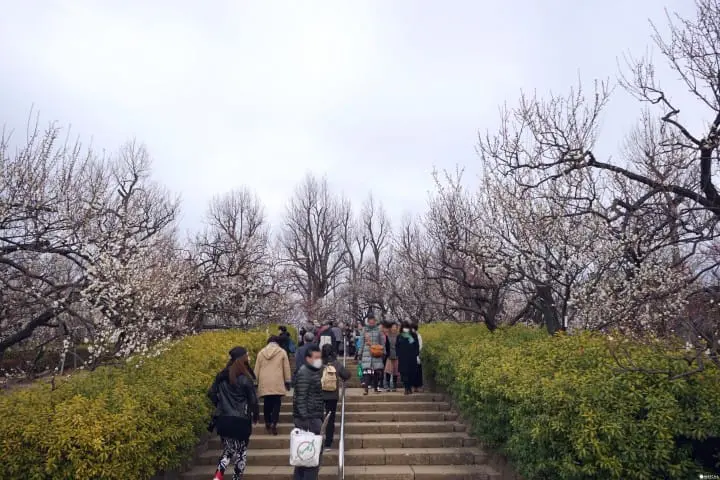
You enter Hanegi Park by walking up a hill on a stone staircase. The staircase is completely surrounded by plum trees so you can enjoy viewing them from the moment you stand in front of it.
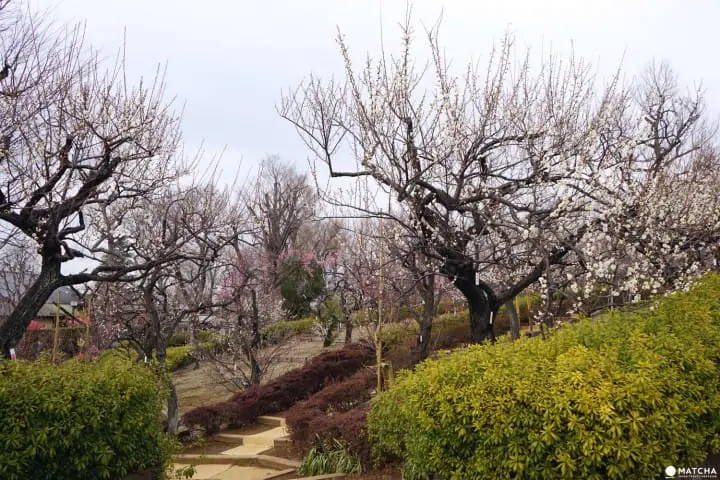
The plum trees are the pride of this park. The first 55 plum trees were planted in Hanegi Park in 1967. Many more followed in the next couple of decades. Currently, the park is home to 650 plum trees: 270 red flowering plum trees and 380 white flowering plum trees.
When I visited, about 550 of the 650 plum trees were in bloom, but none of them seemed to be in full bloom as it was still quite cold outside.
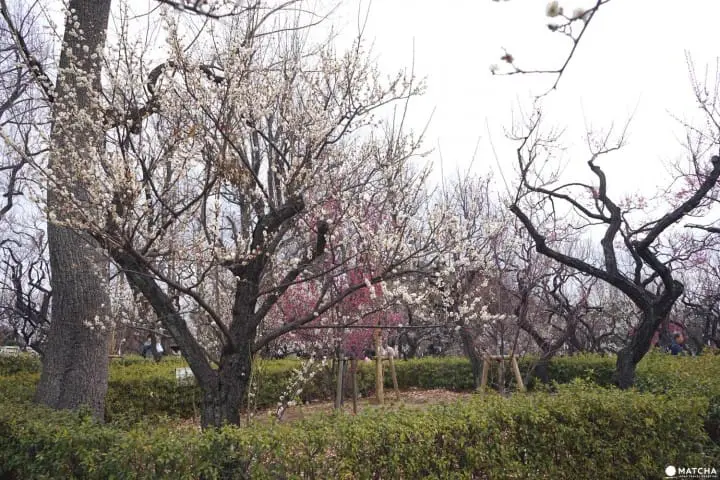
The white flowering plum trees are much more common than the red ones. Setagaya ward has made a great effort to have a nearly even amount of both of them and they make for an incredibly beautiful symbiosis.
Red and white are considered lucky colors in Japan. That is one of the reasons why you can also find this combination in the Japanese flag.
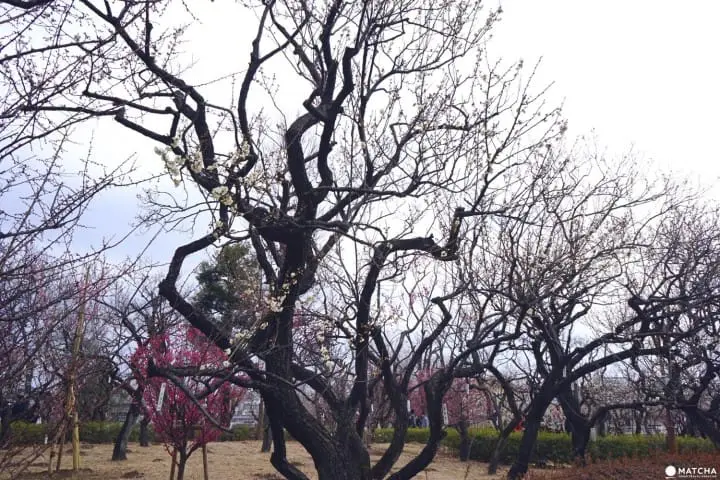
Plum trees look a bit similar to cherry trees but are generally much smaller. They seem to me like the little sibling that couldn't patiently wait like their older brothers for the warm weather but wanted to come out to play as soon as it gets a little warmer, just so that their little petals won't freeze anymore.
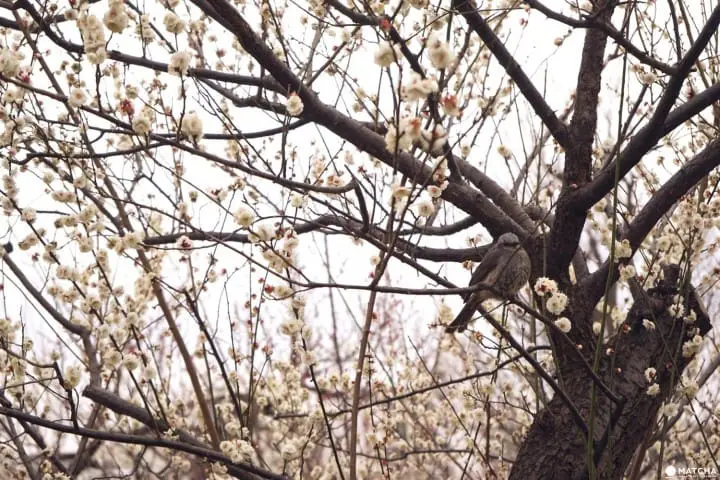
The small size of the tree provides you with something very special - you can actually see the flowers up close and can even get eye to eye with one or the other adorable creature taking a break on the tree's branches. It is still advised that you do not touch the flowers or the birds as both are very delicate. Please keep in mind that other people want to enjoy them as well.

Close to the festival grounds you will encounter a plum tree that is fenced and looks different. The flowers are much smaller and the tree looks small and fragile compared to the others.
This is, in fact, a Chinese plum tree. Japan didn't have plum trees until the first ones were imported from China many centuries ago. However, the plum trees have adapted to the environment and weather and they have developed into a kind of plum blossom specific to Japan. If you compare them, you can see the resemblance but you'll also notice that they are not the same tree anymore.
Setagaya Plum Festival - An Event for The Whole Family
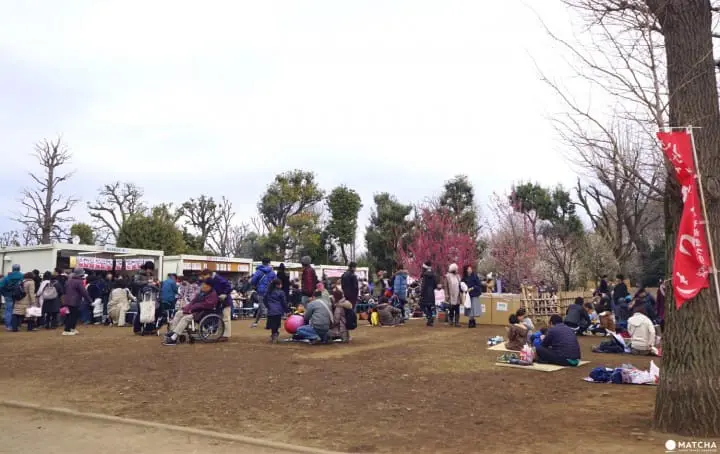
The Setagaya Ume Matsuri (Setagaya Plum Festival) is held every weekend for about one month from early February until early March. This festival is a tradition in Hanegi Park nearly as long as the history of the plum trees blooming there.
It is not a big festival but one that feels very relaxing and local. The typical festival food such as yakisoba (soba noodles grilled with vegetables), yakimochi (grilled rice cakes with soy sauce) and grilled squid are offered at surprisingly low prices and there is even a cotton candy stand, as well as a creative corner for children.
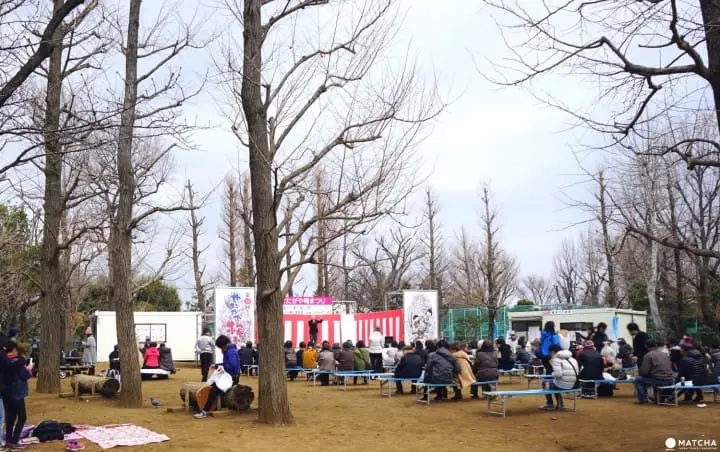
During the festival, there is also a small stage where traditional arts and crafts such as making mochi and traditional Japanese music are showcased. Unfortunately, the timetable is only available in Japanese and changes every week, so maybe you could let yourself be surprised at what you encounter when you sit down in front of the stage.

Setagaya ward also has a booth at the festival. Here you can choose from many different plum flavored treats which you can actually taste before buying.

I took this occasion to try some of the treats available: plum pie, plum daifuku (rice cake filled with sweet bean paste), plum jam, umemaru (crunchy sweet, sour, salty plum snack) and konbu (seaweed) tea with plum flavor. I expected them all to have a salty umeboshi (pickled plum) flavor. However, to my surprise, the plums in the daifuku, the pie, and the jam were small sweet green plums, so don't be afraid to try them if you don't like umeboshi.
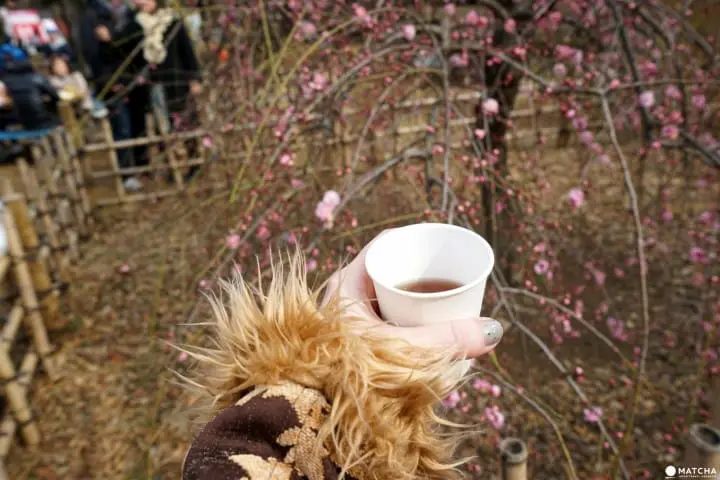
They also handed out free tea at the Setagaya booth. It was just the right thing to enjoy on this rather cold day and it was such a kind and considerate service.
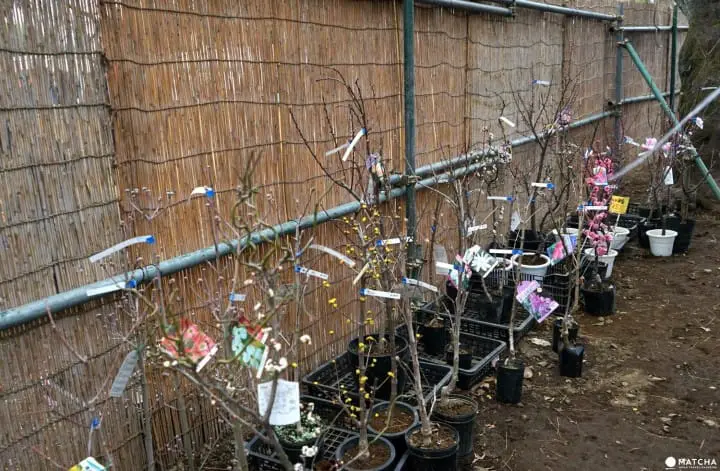
Another thing you will encounter when you stroll around are the many small flower shops close to the festival grounds where you can buy your own small plum tree to take home. The cheapest one I found on that day was as low as 800 yen. If you don't live in Japan, you probably can't take them home on the airplane but you can still marvel at their cuteness.
Celebrate the First Signs Of Spring
If you are in Tokyo in February and early March, I really recommend visiting Hanegi Park during the weekend. You can enjoy the plum blossoms and a traditional Japanese local festival atmosphere.
Whether alone or with your family, Hanegi Park is definitely worth a visit in spring if you like beautiful flowers and would like to try delicious local treats.
In cooperation with the Setagaya Ume Matsuri
Hotels near Setagaya Ward Hanegi Park
You May Also Like:
5 Plum Flavored Treats You Have To Try At A Plum Festival
Craving For Soft Rice Cakes? Try The Freshest Mochi At Iseya Oyama!
Winter Limited! 11 Strawberry Flavored Items At Convenience Stores
5 Types Of Heat Packs - How To Stay Warm In The Japanese Winter
5 Cozy Cafes In Tokyo - Relax With Sweet Treats And Hot Drinks
I was born and raised in Berlin, Germany and am living in Tokyo, Japan since 2008. I am native in German and English.
I am a cat-mom to three rescue cats and I have a deep love for 90s rock music, kickboxing, history, chocolate and cookie dough, anything pistachio flavored, cats and bats, dragons and vampires and all things creepy-cute.
My favorite book author is Anne Rice. My favorite band is LUNA SEA.
My most recommended Japanese movie is 'Merry Christmas, Mr. Lawrence', featuring David Bowie and Ryuichi Sakamoto.



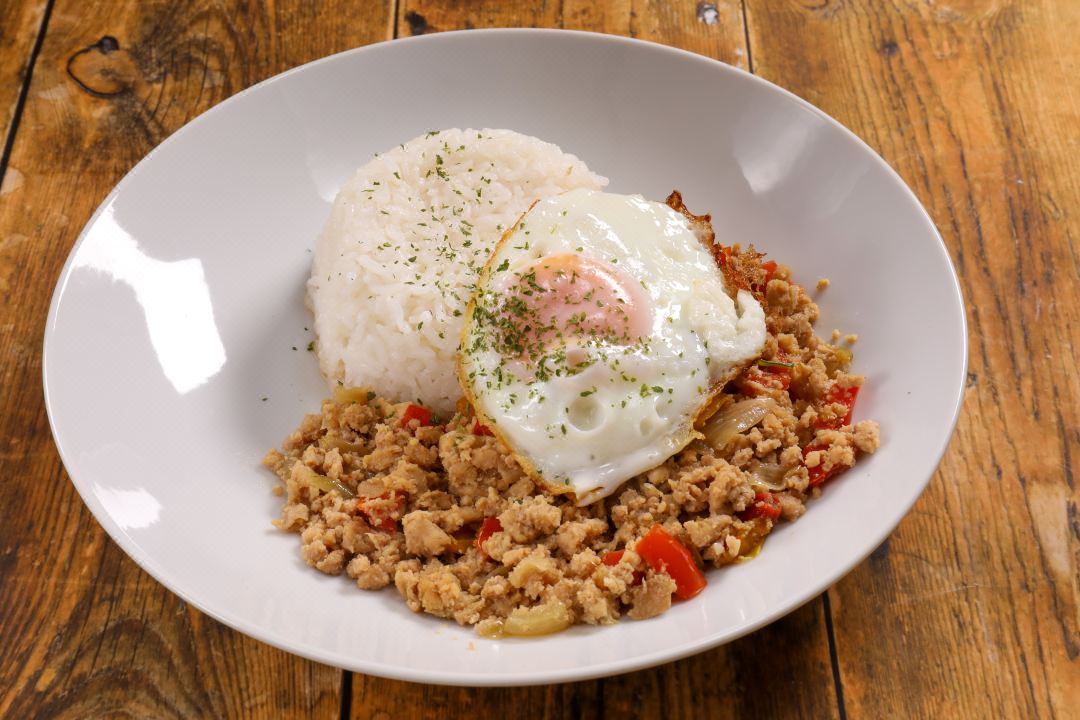


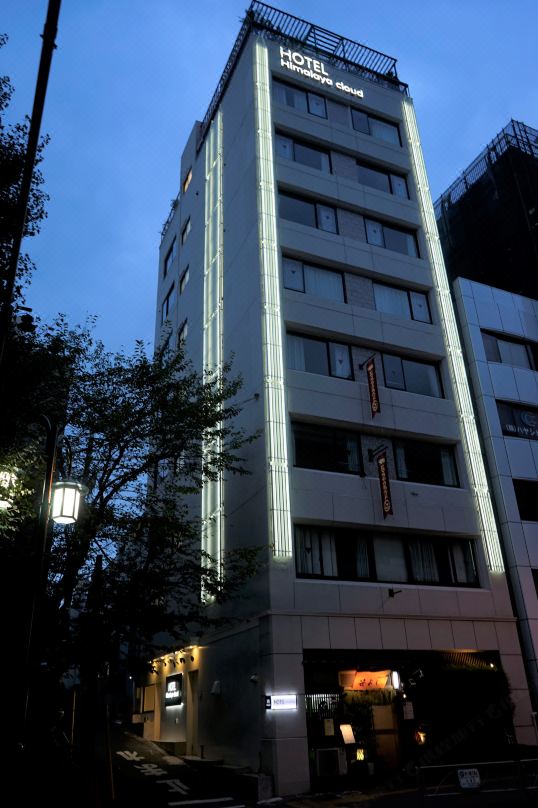







































![[2026] Top 5 Strawberry Picking Spots in Tokushima, Naruto| Farms and Access Guide for January to May](https://resources.matcha-jp.com/resize/720x2000/2025/03/06-227165.webp)

